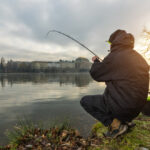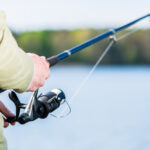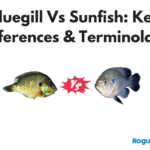When it comes to fishing, there are a variety of different fishing reel types available in 2022. It may seem on the surface that no matter what equipment you buy, it will all do the same job. However, this is a common misconception as there are different types of fishing reels to suit specific fishing situations and the waters you will be fishing in.
Many beginners may think that going for the cheapest or most popular option will be the best for them. However, this is a huge mistake as every angler has a specific circumstance in terms of what waters and fish they will have access to, and that is where this guide comes in.
We’ll be taking you through the varying types of fishing reel types so you can determine which fishing reel is the best one for you. Here we explore many different types of reels, from spinning reels, spincasting reels (see the difference between to popular models the Zebco Bullet and Omega Pro here), baitcasting reels to fly fishing reels, surf fishing reels, and trolling reels that experienced anglers use daily.
Understanding the differences in these reels, pairing with the best fishing rod, and finding the best choice for a specific type of fishing can be overwhelming. But, here at Rogue Rods, we’ve got your back.
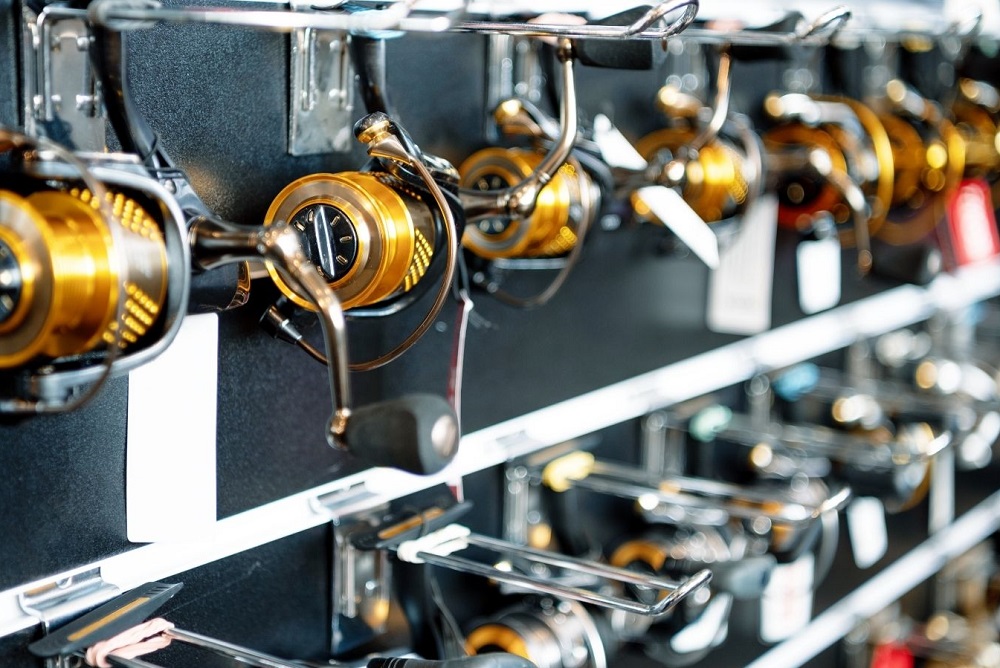
Let’s get to it!
What types of fishing reels are there?
To help determine the best type of fishing reel for you, it is essential to look at what is conventional. Most reels are cylindrical, mounted to the top or bottom of a rod, and have the standard function of winding and stowing lines; the line is then cast out into the water.
There are other typical reel features; one of these is ‘drags,’ which improve the balance and lower the pressure of a taut line. Then there are reel handles controlled by hand to wind in lines; there are also reel feet, which is the part that connects the reel to the rod.
Depending on the type of reel you get, there may be other features; these will vary across each of the five main reel types: spincasting, baitcasting, spinning, fly, and trolling reels. If you’re trying to catch larger fish with either onshore or offshore reels, choosing the correct reel for your circumstance is essential.
Spincasting reels / spincast reels
Looking at a spincasting reel, also known as a spincast reel, the closed face is one of the easiest things to spot. Compared to other reel types, the spool where the fishing line is wound is not exposed.
With this type of reel, there is a button pushed by your thumb as you cast, then as you release your wrist during the cast, you also release this button, which frees up the casting line. It is a handy mechanism.
Spincasting reels use a fixed spool that determines how much of your line goes out and comes back when re-casting or hauling in a fish. Spools are usually made from metal to be strong and durable as well.
Then working in tandem with the reel handle, spools are spun as the handle is turned by hand; on spincasting reels, this doesn’t happen. The spool on a spincasting reel is parallel to the rod axis and doesn’t rotate during a cast, and the lack of rotation is something to acknowledge.
A benefit of having a fixed spool is how it allows you to fish with a lighter lure and bait. Though spincasting is not as popular as in the past, they are a fantastic option for beginners or children just learning how to fish. The reason is that the plastic cover that enables the line to come out from a tiny hole at the front of the reel is convenient and handy. A spin casting reel can prevent tangles and other possible technical problems that can often be seen in fishing tackle.
Pros of spincasting reels / spincast reels
- Great for light lines and light lures.
- It helps to prevent tangles or line twists.
- Excellent gear ratio
Cons of spincasting reels / spincast reels
- They are not the strongest or most durable reel type.
- Their performance with heavy lines, lures, or bait is sub-par.
Baitcasting reels
We are probably stating the obvious here, but baitcasting reels go with baitcasting rods and are a very popular choice. These rods differ from spincasting rods (learn about the best drop shot fishing rods here) where the guides are on the bottom. These are some of the most common reels used by experienced and professional bass fishermen, and this is due to the increased sensitivity and control of this type of reel.
The main feature of a baitcasting reel, which some say is the most straightforward reel, that sets them apart from other types, such as the spincasting type, is a revolving spool. A revolving spool requires anglers to hold the line down with their thumb on a bar or button, which means that the mechanism for casting and controlling the amount of line that goes out is different. One of the benefits of this mechanism is that it provides greater control.
Aside from the benefit of greater control, a baitcasting reel will also allow for more power when you reel fish in. This is thanks to an internal gear system, in which one revolution of the handle will result in several revolutions of the line spool.
It is not all sunshine and rainbows, though, and the biggest drawback to using a baitcasting reel is that many novices or beginners (learn about the best baitcaster for beginners here) will be intimidated by the steep learning curve involved in casting with one of these.
Do not forget the complication of bird-nest styled tangles with these reels too. You will need to practice casting before you are on the water trying to land yourself a catch, just because of these types of tangles. Dealing with a bird’s nest tangle on the water is not a fun way to spend your time.
One of the most significant differences between a baitcast reel and other reels is their strength, being the best at handling heavy lines and lures. This provides greater versatility and makes them an excellent option for anglers who like to fish using various techniques in different waters.
Pros of baitcasting reels
- They have a robust drag system that reduces pressure on the rod and the line.
- They are the best option for handling heavy lures and lines.
- Excellent gear ratio and ease of use
- Rod and reel combos (see our in-depth review of the Abu Garcia Veritas casting rod and reel combos here) are readily available
- Great with live bait and heavier lures
Cons of baitcasting reels
- It’ll take you some practice to become efficient.
- They are not suited to use with light lures or lines.
Spinning reels
Spinning reels are positioned on the bottom of the rod; they are somewhat similar to spincasting reels bar two features. One of these features is the lack of a plastic cover on the spool; this keeps all parts and pieces exposed. The other feature is that the spool rotates rather than is fixed in place.
When you compare this type of reel to a baitcasting reel, one of the key differences that a spinning reel has is the feature of a power roller, which is a small wheel that ensures that the line runs smoothly from the spool up to the guides on the underside of the rod. The roller is then coupled with the bail movement, a metal arm that keeps the line neatly in place.
To cast a spinning reel means to involve this bail being moved into an upward position or opening.
To cast a spinning reel involves opening the bail and holding the line with your pointing finger to keep the line taught, then you can cast and release your finger simultaneously as you break your wrist. Compared to spincasting reels, these lines will unspool smoothly, and the cast is likely to be more accurate, with less risk of tangling.
One of the main advantages of spinning reels is the drag, which can be easily adjusted with a dial on the front of the spool. This adds extra control and helps throw lighter lures further out into the water while avoiding any backlash from the line in high winds.
Though these can be prone to twists in the line due to a small-sized spool, these reels are praised for their added control and therefore are another reel choice that is a good option for beginners, children, and novices.
Pros of spinning reels
- Stellar casting ability with minimal backlash.
- A fantastic choice for light lines and light lures.
- Excellent for freshwater and saltwater fishing
Cons of spinning reels
- These reels can be susceptible to line twists with large diameter lines.
Fly reels
Fly reels are options that have not changed a great deal since they were first patented back in the late 1800s; fly reels have seen something of a resurgence in recent times due to the introduction of large arbor fly reels.
These differ from antique fly reel models that have typically narrow spools; the new arbor, which is the distance from the base of the spool to the center spindle, update helps increase the retrieve rate. This means that you get faster when you reel the line back in onto the spool and, therefore, maximize your water efficiency.
This update, what you may call a 500 percent increase in speed, which large arbor types provide, saves you from annoyances as fly fishing can be more technical than other fishing styles. It uses a unique casting technique that is primarily focused on a nearly weightless line and lure.
There are a few common frustrations that come from this type of fishing, one of these is having to strip off long lengths of slack for casting and then repeatedly reeling in moving locations or fighting a fish. A large arbor fly reel can help rectify this by reducing the reeling component and making it easier to quickly switch things up, taking a load off your shoulders.
Besides the modern large arbor-type fly reels, fly reels also have two other options for their arbors, standard arbor reels, and mid arbor reels. A traditional reel will have the spool base in the middle part of the reel, and a mid-arbor has it moved out, with an increased reel width. Both of these differ from the more oversized arbor due to being smaller and having a lower diameter.
Choosing between these three types of arbor reels, it is best to overlook the benefit of fast retrieval and have a look as a preference in the focus of aesthetics and comfort. Compared to other reel types, it is all down to the style and technique of catching a fish.
A fly reel should also not be used with a spin or fly rod that utilizes crankbaits or other resistance lures.
Fly reels do not play any part in casting, unlike these other reel types; they are only suitable with specific fly rods and a lightweight line. There are disadvantages in this lack of versatility, one of these being cost as fly fishing gear tends to be more expensive. Alos a compromise on easy usage, as spinning reels are much easier to manage.
When it comes to construction, fly reels have more in common with other reel types in their material makeup. With materials, milled aluminum rees are the most expensive and the most durable option you can get. On the other hand, cast aluminum is less costly but is more easily cracked.
It is not uncommon to get plastic components for fly reels, these do help lower the reel cost, but they are best avoided if possible due to their lack of longevity and durability.
Pros of fly reels
- A large arbor reel has a fast retrieval rate.
- Large arbor reels are likely to have fewer tangles than other types of arbor reels.
- Very suitable to use with lightweight lures and cast at a long distance.
Cons of fly reels
- More expensive than some other reel options.
- Restricted use to fly fishing only.
- They do not contribute to the casting.
Trolling reels
Trolling reels are designed specifically for fishing for large fish in saltwater environments. Trolling reels, often referred to as conventional reels, are not that different from baitcasting reels in how they function, as those are often used on lakes, streams, and rivers.
One of the most significant differences in these reels is that they are commonly used to drag a line behind moving boats in open waters.
For this reason alone, trolling reels are often wider or rounder than other reel types as they need to house more lines. Over the rest of the reel, including the handles, feet, and spools, all are larger, which makes them imperative for usage with a trolling rod.
Added features such as bait clicker alarms and built-in line counters that count how much line has been released and allow the bait to be kept close to the bottom of the water, also set trolling reels apart from the rest.
With the technique, trolling can be very different per fisherman. These reels are suitable for hauling in any heavyweight fish species, such as tuna, marlin, and sailfish. Trolling rods and reels are also sometimes used for salmon (see the best trolling rods for salmon here), trout, and bass. A trolling reel and trolling rod can manage both types of fishing (see the best salmon and steelhead fishing rods here), but this will likely be too cumbersome, heavy-duty, and expensive for stream or river-based fishing.
Despite being often modified with aftermarket add-on options, they differ due to the counter feature. Many manual counters are better for casual or novice buyers as they will track the revolutions of a spool and have preset settings, which, depending on the line weight, can change to keep the bait at a targeted depth.
Then there are electric counters; these can allow you to calibrate these settings more finitely but can be harder to use. They can also be more temperamental in outdoor elements, and battery life may be an issue.
Trolling reels are usually cast aluminum, machined aluminum, or graphite aluminum when considering materials. The graphite types are the cheaper option but are not as strong.
However, they are lighter to handle. The cast aluminum types are more solid but may strain under the weight of a big catch. Then we have machined aluminum, which can easily handle big fish and are much more durable than other possible alternatives due to their rigidity.
If you are a fan of trolling, you may also want to seek out another feature on a reel called level wind. This mechanism distributes lines evenly on the spool; however, learning to cast with this feature can be difficult; it can help cast the bait out more smoothly.
Some trolling reels will also have lugs to help strap onto a harness, an essential additional feature for hardcore deep-sea fishers.
Pros of trolling reels
- Very heavy duty and robust, so it will not sustain damage easily.
- It offers a great deal of versatility with fishing lines and is suitable for use with lures.
Cons of trolling reels
- Solid spools may require more force to get the spool spinning, which can cause difficulties with control.
- It can be difficult to transport due to being heavyweight.
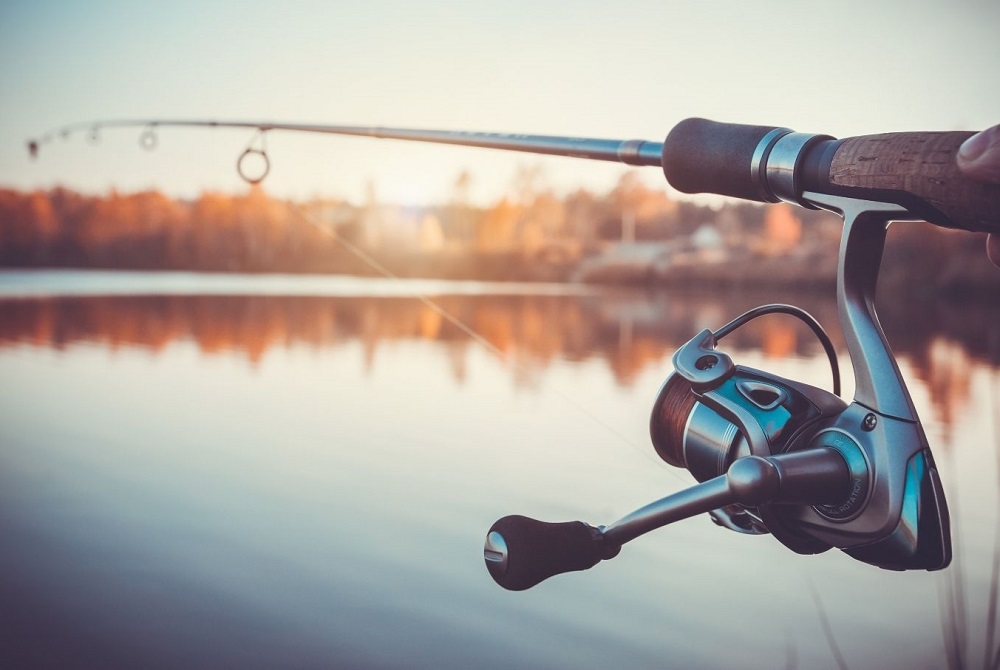
Top Fishing Reel Considerations and Which One is Right for You
Once you become familiar with all the different types of fishing reels, you must also consider the more practical aspects of the sport that will have to come into play when choosing the right reel.
This is the point at which you need to consider your habits and what you prefer, precisely where you fish, your level of experience, what kind of tackle you use, etc. These are the defining factors that will help you make the decision you need about what reel to purchase.
Your Experience Level
How experienced an angler you are should play a big part in deciding what type of reel you need to go for. A novice angler, who might be dipping into the sport for the first time, is often advised to go with spincasting reels because of their simplicity. They are straightforward to use and are very simple to maintain.
As you gain experience, many people will then move onto a spinning reel, offering added control and added cast length.
Finally, more advanced anglers will move onto baitcasting reels, which offer maximum power and control but are more challenging to cast.
Baitcasting and spinning reels both make promises in different ways. There is a situational difference between the two; instead of being based on quality, spinning reels seem simpler but more ineffective in heavier weeds where a baitcaster will handle better. Although, an experienced user of spinning reels will probably argue otherwise. But this is down to experience.
Weight and Weather Conditions
Professionals will often agree that baitcasting reels out-edge spincasting and spinning reels to handle a heavier line; this is down to their increased torque.
When purchasing a reel, this gives anglers much to consider, especially if you are a person who intends to fish more frequently across the colder months, like autumn and winter. Weather conditions in these seasons can be unpredictable and so a heavier line and suitable reel that can handle it well is a plus.
A lighter line and spincasting/ spinning reel combination would probably be very frustrating in heavy winds or rainfall, while a heavy line might be a bit too much in the summer months.
It would be best to consider that it pays off to match your line with the reel type, which means thinking about where, when, and how you are likely to catch these fish. Then you should adjust your search to these factors.
Your Available Tackle
A significant factor in the purchase of a fishing reel, when thinking about tackles, is going to be focused on the rod. Fly rods should only take fly reels, for example, or a baitcasting reel should only fit with a baitcasting rod.
There can be exceptions; however, as long as the reel handle fits the rod, there is no real reason you cannot mix and match. An example would be using a baitcasting reel on a spinning rod (learn about the champion-named Abu Garcia Jordan Lee Baitcaster Combo here), where the only rod bend will be different. This can open up your options, especially if you want to match a reel with an existing rod that you already have.
On the other hand, Lures are much more rod-dependent; than reel-dependent.
Technique and Location
Every style of fishing had additional techniques. While these do not usually impact reel types, it is still helpful to know how you may prefer to fish.
For example, despite being pretty similar in rod and reel to baitcasting, trolling requires more line weight. Wanting to fish in that way means that only a specific trolling reel will do.
A novice may be more likely to go pond or stream fishing first before getting more adventurous. For this, baitcasting, spinning, or spincasting are excellent choices as they suit a range of lures lines and suit beginners much better.
The Fish Type You Are Trying To Catch
The final thing to consider is what types of fish you are looking to catch, both now and in the future. A good reel should be dependable and durable even when changing your goals. A novice may wish to work their way up from an easy-to-catch freshwater fish (going on vacation, check out some great fishing charters here) to eventually tackling the fish that will give more fish.
It would be best to have something you can trust when you go from one to another; you need to know your reel can tackle both easy fish and something like a large-mouth bass.
You should pay attention to the friction plates in a reel, as these are responsible for the drag and will help rotation if a fish pulls hard on the line, meaning no break and still getting the catch. Get yourself a versatile and durable reel that suits you.
Summary of the Different Types of Fishing Reels
In conclusion, it is always important to know about the various types of reels and their qualities before making your final decision. This is because you’ll know what to expect from the product you choose and what other reels will be used for, so if you decide you want to try something new or want to upgrade your reel, you’ll know what to look out for.
If you are still in doubt when researching, then it’s always good to ask for assistance from customer service teams who are more than happy to help you however they can.
